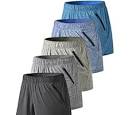Interferential current machines, also known as interferential therapy devices, are medical devices that utilize alternating medium-frequency electrical currents to stimulate the body's deep tissues for the management of chronic pain, muscle spasm, and related conditions. These machines work by generating a low-frequency current through the simultaneous application of two different medium-frequency currents. This principle of interferential current is rooted in the idea that the resulting modulated low-frequency current can relieve pain and promote healing in the affected areas.
History and Origin
Interferentialcurrent technology originated in the 1950s, when Dr. Nemec introduced it to address the discomfort caused by low-frequency currents. Over time, studies have shown that this therapy can indeed reduce pain by stimulating the primary afferent neurons. The modern version of interferential current machines emerged in the 1970s, coinciding with advancements in pain mechanisms that demonstrated the effectiveness of modulating pain through the stimulation of peripheral nerves.
Application
Interferential current machines are commonly used for the following purposes:
-
Pain Relief: By stimulating the sensory nerves in the affected area, interferential current can help reduce pain, including postoperative pain, phantom limb pain, and severe arthritis-related pain.
-
Muscle Spasm Relief: Interferential current is effective in relaxing spastic muscles caused by conditions like cerebral palsy, multiple sclerosis, and spinal cord injury.
-
Edema and Swelling Reduction: It can be used to treat swelling and enhance circulation in the affected extremities, aiding in faster recovery from injuries.
-
Subacute and Chronic Conditions: These machines are particularly useful for managing chronic conditions that require long-term management, such as severe lumbar back pain and plantar fasciitis.
-
Pre- and Post-Surgical Procedures: Interferential current may be used before or after orthopedic surgeries to reduce pain, swelling, and muscle stiffness.
Treatment Parameters
Interferential current treatment is highly可调。Treatment parameters include the frequency, amplitude, and duration of the electrical current. The machine may offer manual or automatic settings, allowing the therapist to adjust the current as needed to achieve the desired effect.
Safety and Efficacy
Interferential current devices are generally considered safe for therapeutic use. However, as with any medical device, proper training and safety measures should be adhered to. The potential side effects of interferential current are typically mild and include skin irritation at the electrode site, which typically resolves within a few sessions.
The efficacy of interferential current treatment can vary depending on factors such as the severity of the condition, the baseline pain levels, and the compliance of the patient with the treatment plan. Many patients report significant relief of their symptoms following interferential current therapy, suggesting that it can be a valuable tool in the treatment of chronic pain conditions.
###Interferential current machines represent a promising approach to pain management and muscle relaxation. With their ability to modulate pain signals and promote blood flow, these devices have the potential to provide substantial clinical benefits for a wide range of patient populations. As research continues to explore their efficacy and mechanisms of action, interferential current machines should remain an important option in the treatment armamentarium of healthcare professionals.









